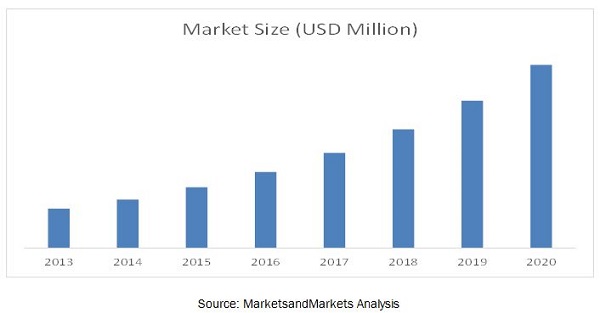SHM facilitates decision making in condition-based maintenance procedure to ensure structural integrity of various infrastructure such as bridges, dams, tunnels, and others. SHM-based condition monitoring helps to reduce the maintenance cost of infrastructure compared to other methods. For instance, to reduce the maintenance cost of bridges, the South Carolina Department of Transportation (SCDOT) used sensor-based, monitoring method/technology (SHM) for the purpose of bridge monitoring. As a result, SCDOT was expected to save approximately USD 5 million from eight SHM-equipped bridges in 2014. Similarly, if SCDOT would make use of the same method/technology on 1% of all the bridges in South Carolina, then SCDOT is expected to save approximately USD 56 million in the near future. (Source: SCDOT). The potential savings opportunity in infrastructure maintenance is expected to create demand for SHM globally.
The report predicts that the SHM market is expected to reach USD 1.89 billion by 2020, at a CAGR of 24.7%, between 2015 and 2020. In 2014, North America and Europe were the leading regions for the SHM market. In the same year, bridges and dams were the largest market in the SHM application, followed by tunnels. According to the U.S. Department of Transportation (U.S. DOT), in 2014, more than 61,000 bridges in the U.S. were structurally deficient, which needed significant inspection and monitoring for repair and maintenance work. Similarly, in other parts of the world, increasing number of structurally deficient and functionally obsolete bridges create the demand of SHM for inspection and monitoring of bridges for which the market is expected to grow at the highest CAGR of 27.1% between 2015 and 2020.
APAC SHM market for bridges is estimated to grow at the highest CAGR of 33.0% between 2015 and 2020. One of the primary reasons for such a growth is rising number of on-going infrastructure projects in this region. For instance, according to New York Times, China is constructing one of the largest sea bridges in the world named as Hong Kong-Zhuhai-Macau Bridge, which is around 31 miles in length. Other factor supports this growth is the recent Chinese government regulation on the use of SHM in bridges which outlines the importance of durable, maintainable, and replaceable sensor with service life of up to 20 years if embedded or 3 to 5 years if placed on the surface of the bridge.
The key players in the SHM market include Advitam Inc. (France), COWI A/S (Denmark), Geocomp Corp. (U.S.), Geokon, Inc. (U.S.), Hottinger Baldwin Messtechnik GmbH (Germany), and Nova Metrix LLC, (U.S.) among others.
The report also provides an in-depth analysis of the key players in the SHM market with their profiles, recent developments, key issues, SWOT analysis, and opportunities in the market, global adoption trends, and future growth potentials.



